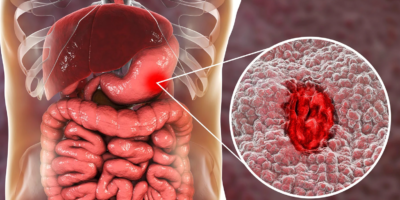Worldwide, diabetes is one of the most common chronic diseases. In developed countries, diabetes has reached epidemic proportions. In the United States, it’s the seventh leading cause of death. The number of Americans diagnosed with diabetes tripled between 1980 and 2010 when the number topped 20 million. In the developing world, cases of diabetes have surged, due mainly to the importation of the Western lifestyle, particularly the combination of physical inactivity and diets high in refined grains and sugar, both of which fuel weight gain and which, in turn, promotes obesity. Fortunately, type-2 diabetes, which accounts for 95 percent of diabetes cases, is largely preventable. In type-2 diabetes, the pancreas makes plenty of insulin, but the liver, muscles, and fat cells become insulin resistant, meaning the cells fail to respond to this hormone. Things that promote insulin resistance include being overweight or obese, chronically stressed, sleep-deprived, and physically inactive. Avoiding all of the aforementioned risks helps prevent type-2 diabetes.


1. Roasted Veggie Explosion
How it works: Fruits and vegetables contain fiber, which slows the absorption of dietary sugars, and many nutrients beneficial to overall health and reducing diabetes risks. The World Health Organization recommends eating at least five portions a day to prevent diabetes. A recent study found that people who ate a greater quantity and variety of fruits and vegetables had a much lower risk of developing type-2 diabetes.
- PREPARATION:
- 1 to 2 tablespoons (15 to 30 ml) olive oil
- 1 large onion, quartered
- 2 carrots, diced
- 1 red or yellow bell pepper, seeded and sliced into strips
- 1 bunch asparagus, woody bottoms cut off
- 2 beets, peeled and quartered
- 4 garlic cloves, peeled
- ¼ cup (7 g) crushed fresh rosemary
- Sea salt (optional)
- DIRECTIONS:
Preheat the oven to 400°F (200°C, or gas mark 6).
Spray or brush a baking sheet with olive oil. Drizzle the olive oil over the vegetables in a bowl and toss to coat them. Spread the vegetables and garlic evenly across a baking sheet. Sprinkle with the rosemary and the sea salt to taste, if using.
Roast for 15 minutes and then flip the vegetables and roast for another 10 minutes. They should be browned but not overcooked.
- YIELD: 06 SERVINGS
2. Baby Bello Soup
How it works: Mushrooms contain complex carbohydrates and fiber. Extracts of a particular button mushroom (Agaricus blazeii, which you won’t find in the store but is related to portobello and button mushrooms) reduced high blood glucose. In combination with medication, this extract decreased insulin resistance in people with type-2 diabetes. No research has, to our knowledge, examined the effect of eating whole mushrooms on blood glucose.
- PREPARATION:
- 1 tablespoon (15 ml) olive oil
- 2 cups (140 g) sliced cremini mushrooms, divided
- 2 leeks, sliced and well rinsed
- 1 celery stalk, diced
- 1 small carrot, diced
- ¼ teaspoon minced fresh garlic
- ½ teaspoon grated fresh ginger
- ¼ teaspoon freshly ground black pepper
- ¼ cup (60 ml) chicken or vegetable stock
- 6 chicken bouillon cubes, or 2 tablespoons (12 g) bouillon grains
- 2 quarts (2 L) water
- 1 tablespoon (16 g) miso paste
- Chopped fresh scallions and/or cilantro, for garnish (optional)
- DIRECTIONS:
Heat the olive oil in a large pot over medium-high heat. Add 2 tablespoons (8.75 g) of the mushrooms, along with the leeks, celery, carrot, garlic, ginger, and pepper. Stir in the stock. Add the bouillon, water, and miso paste. Stir well. Raise the heat to high and bring the mixture to a boil. Cover and lower the heat to medium. Cook for 30 to 40 minutes.
Place the remaining mushrooms in another large pot. Place a strainer over that pot and pour the broth of the first pot into the second, straining out all the other contents. Steep for about 10 minutes. Enjoy the soup while it’s steaming, garnished with chopped scallions or cilantro, if desired.
- YIELD: 4 TO 6 SERVINGS
3. Simply Psyllium Date Loaf
How it works:
Not only does psyllium husk prevent and correct constipation, but the fiber lowers cholesterol levels as well as blood glucose after a meal in people with type-1 and type-2 diabetes. It doesn’t lower blood glucose in people who are not diabetics. Fiber helps you feel fuller, which can reduce calorie intake (a boon if you’re trying to lose weight).
Stevia is a South American herb whose leaves produce a sweetener that, unlike sugar or honey, does not send blood sugar skyrocketing. Lab research also indicates it has anti-diabetes activities.
- PREPARATION:
- 1¹∕3 cups (120 g) gluten-free oat flour
- ¼ cup (28 g) flaxseed meal
- 2 tablespoons (36 g) psyllium powder
- 1½ teaspoons (7 g) baking soda
- 5 large eggs
- ¼ cup (60 ml) water
- ¼ cup (60 ml) coconut oil, melted
- 1 packet (1 g) stevia
- 1 tablespoon (15 g) apple cider vinegar
- ½ cup (89 g) chopped, seeded dates
- Plain nonfat Greek yogurt
- DIRECTIONS:
Preheat the oven to 350°F (180°F, or gas mark 4).
Lightly spray a 9 x 5-inch (23 x 12.5 cm) loaf pan with canola oil. Set aside.
In a large bowl, blend the flour, flaxseed meal, psyllium, and baking soda. Stir in the eggs, water, oil, stevia, and vinegar. Fold in the chopped dates. Pour into the prepared pan and bake for about 30 minutes or until the center springs back to touch. Serve warm with a dollop of yogurt.
- YIELD: 01 LOAF
4. Flaxseed Breakfast Delight
How it works: Flaxseed consumption can improve some measures of disease in people with type-2 diabetes. Studies show that a compound in flaxseed called lignan (also called lignin) can improve some measures of disease in people with type-2 diabetes. Some research indicates that two species of cinnamon—Ceylon or “true” cinnamon (Cinnamomum verum, a.k.a. C. zeylanicum) or Chinese cinnamon (Cinnamomum cassia, or C. aromaticum)— lower blood glucose.
- PREPARATION:
- ¼ cup (28 g) flaxseed meal
- ¼ cup (60 ml) nonfat milk or almond milk
- 1 large egg
- 1 teaspoon (7 g) honey
- ¼ cup (35 g) seeded and cubed apple
- 1 tablespoon (7.5 g) crushed walnuts
- At least 1 teaspoon (2 g) ground cinnamon
- DIRECTIONS: Pour the flaxseed meal into a microwave-safe breakfast bowl. Stir in the milk, egg, and honey. Microwave on high for about 30 seconds. Stir the cereal, then fold in the apple and walnuts. Stir in the cinnamon. Microwave for another 30 seconds. Enjoy.
- YIELD: 01 SERVINGS
5. Caff It Up
How it works: Coffee and tea drinkers enjoy some protection from diabetes. Caffeine alone is associated with reduced risk. Take it easy. Too much caffeine can make you jittery and sleepless.
- PREPARATION:
- 1 quart (946 ml) water
- 4 teaspoons (8 g) Earl Grey or other
- black caffeinated tea
- 8 ice cubes
- Handful of fresh, whole mint leaves Stevia
- 4 lemon slices
- 4 orange slices
- DIRECTIONS: Boil the water. turn off the heat, add the tea, and brew for 3 to 5 minutes. Pour the tea through a strainer into a pitcher. Stir in the mint leaves. Add stevia to taste. Chill the brew for 1 hour. Add two ice cubes to each of four glasses. Pour the minted tea over the ice cubes. Garnish each glass with slices of lemon and orange.
- YIELD: 04 SERVINGS
6. Buckwheat Blueberry Pancakes
How it works: Buckwheat flour packs a magnesium punch. Whereas low magnesium levels seem to raise the risk of type-2 diabetes, eating a diet high in magnesium has been linked to a reduced risk of developing type-2 diabetes. Studies show that just 100 milligrams put adults at a 15 percent lower risk of developing the disease. Aside from buckwheat, good sources of magnesium include spinach, beans lentils, almonds, peanuts, cashews, and wheat bran. Barley, yogurt, and halibut are other terrific sources.
- PREPARATION:
- 1½ cups (180 g) buckwheat flour
- 1 packet (1 g) stevia
- 2 teaspoons (5 g) ground cinnamon
- 1 teaspoon (5 g) baking soda
- 3 tablespoons (45 ml) olive oil
- 2 cups (475 ml) buttermilk
- 1 cup (145 g) blueberries
- DIRECTIONS:
Combine the flour, stevia, cinnamon, and baking soda in a large bowl. Drizzle in the olive oil and begin stirring. Slowly pour in the buttermilk and continue to stir, mixing only until the ingredients are just combined and still lumpy. Fold in the blueberries.
Wipe a griddle with olive oil and heat it over medium heat. Ladle the batter for the pancakes on the hot griddle. Lower the heat to medium-low, cook, and turn when the top side shows bubbles—about 2 minutes. Cook the other side for about a minute until browned.
Suitable toppings include a dollop of yogurt, a few additional fresh blueberries (or other fresh fruit), or a small amount of peanut butter. Resist the urge to smother the pancakes with syrup, honey, jam, or jelly—sugary substances that will stimulate a rapid rise in blood glucose.
- YIELD: 04 SERVINGS
7. Cinnamon Super Oats
How it works: Studies show that oats and oat bran can lower blood glucose and improve insulin function in people who are healthy, diabetic, or at risk for diabetes. Compounds in flaxseed called lignans can reduce some disease markers, including blood glucose, in people with type-2 diabetes. Psyllium fiber helps lower blood levels of cholesterol and glucose (sugar) in people with type-2 diabetes. The apples help make the cereal naturally sweet and rich and add fiber and flavonoids. Diets rich in apples have been linked to a modest decreased risk of developing type-2 diabetes. As noted in the earlier recipe, research shows that liberal use of cinnamon may lower blood glucose.
- PREPARATION:
- ½ cup (40 g) whole or steel-cut oats (not instant)
- 1 cup (235 ml) water
- 1 tablespoon (9 g) golden raisins
- ½ apple with skin, chopped and seeded
- 1 to 2 teaspoons (2.5 to 5 g) ground cinnamon
- 2 tablespoons (14 g) flaxseed meal
- 1 tablespoon (18 g) psyllium powder
- 1 tablespoon (15 g) nonfat Greek yogurt
- ½ banana, chopped
- DIRECTIONS: Mix the oats, water, raisins, apple, and cinnamon in a medium-size, microwave-safe bowl. Microwave on high for about 3 minutes. Stir in the flaxseed meal and psyllium powder. Top with yogurt and chopped banana.
- YIELD: 02 SERVINGS
8. California Cactus Salad
How it works: Prickly pear cactus has both fiber and pectin. Some studies show that fruit can help lower blood glucose by lowering the absorption of sugar in the stomach and intestines. Some researchers also think it lowers cholesterol levels and kills viruses. One study showed that the species Opuntia streptacantha, specifically its broiled—not raw—stems, helped decrease blood glucose levels in patients with type-2 diabetes.
- PREPARATION:
- 2 medium-size cactus pads (nopales)
- 1 tablespoon (15 ml) olive oil
- 3 garlic cloves, minced
- ½ cup (120 g) canned black beans, rinsed and drained
- ¼ cup (25 g) chopped scallion
- ¼ cup (4 g) chopped fresh cilantro
- 1 tablespoon (15 ml) fresh lime juice
- 1 teaspoon (4 g) sugar
- ½ teaspoon ground cumin
- ¼ teaspoon dried chipotle powder, or about
- 1 tablespoon (9 g) minced chipotle pepper in adobo
- 2 medium-size tomatoes, seeded and diced
- 6 cups (330 g) shredded lettuce
- 2 tablespoons (19 g) crumbled queso fresco
- DIRECTIONS:
Carefully trim off the eyes from each cactus pad with a vegetable peeler or knife and remove any spines from the green skin; rinse the fruit thoroughly. Cut the cactus pads into thin strips.
Heat the oil in a large nonstick skillet over medium-high heat. Add the cactus and garlic and sauté for 7 to 8 minutes or until the cactus is tender. Combine the cactus mixture with the remaining ingredients, except the lettuce and cheese.
Arrange one-quarter of the lettuce on each of four plates and top each with one-quarter of the cactus mixture and one-quarter of the cheese.
- YIELD: 04 SERVINGS
- NOTE: You can find nopales at Hispanic food markets, if not at your own supermarket.
9. Artichokes with Pepper Dip
How it works: Artichoke petals and hearts are rich in fiber. Also, artichoke is related to milk thistle. Milk thistle extracts improve fast blood glucose, cholesterol levels, triglycerides, and other indicators of risk in people with type-2 diabetes. Regular consumption of cayenne and chiles may also help regulate insulin levels after a meal.
- PREPARATION:
- 2 garlic cloves, divided
- 1 cup (230 g) plain Greek yogurt
- 2 tablespoons (12 g) chopped fresh mint
- ¼ teaspoon ground cumin
- ¹∕8 teaspoon cayenne pepper
- Dash of olive oil
- 2 artichokes
- DIRECTIONS:
Mince one garlic clove. In a bowl, mix the yogurt, minced garlic, mint, cumin, cayenne, and olive oil. Refrigerate for at least 1 hour.
While the dip is chilling, snip the sharp tips of the artichoke petals and trim the stem to about 1-inch (2.5 cm) long. Fill a large pot with about two fingers of water and drop in the other garlic clove. Place the artichokes in a steamer basket.
Bring the water to a boil and steam the artichokes until you can pierce the bottom of the stems with a fork and the leaves easily pull away for about 30 minutes.
Serve the artichokes warm with a cool dip.
- YIELD: 02 SERVINGS
5. Fabulous Fenugreek Stir-Fry
How it works: Fenugreek (Trigonella foenum-graecum), a plant cultivated in India, North Africa, and the Mediterranean, contains soluble fiber and beneficial components. Preliminary studies show that powdered, defatted seeds lower glucose, cholesterol, and triglyceride levels. Fenugreek seems to benefit people with both types of diabetes. In one study, type-2 diabetics who added fenugreek to their regimen were able to reduce their medications by 20 percent. Study dosages have ranged from 2.5 milligrams of encapsulated seed powder taken twice a day to 25 to 100 grams of ground seeds divided into two doses and mixed into such foods as bread.
- PREPARATION:
- 1 large sweet onion, diced
- 2 celery stalks, diced
- 1 red or yellow bell pepper, seeded and diced
- 1 teaspoon (4.5 g) whole fenugreek seeds
- 1 tablespoon (15 ml) canola oil
- DIRECTIONS: Combine all the ingredients in a bowl, ensuring everything is coated with the oil. Transfer to a large skillet and sauté over medium heat until the onion is transparent, 8 to 10 minutes.
- YIELD: 02 SERVINGS
Lifestyle Tip
- Mellow out. When you’re stressed, the hormones cortisol, epinephrine, and glucagon rise. all three hormones raise blood glucose, thereby antagonizing insulin. For people who already have diabetes, moderate psychosocial stress can undermine glucose management. Controlling stress, on the other hand, improves glucose levels. Preliminary research supports mindfulness-based stress reduction in diabetics. (Mindfulness meditation is a practice that involves deliberately paying attention to the present moment.)
- Enjoy an occasional beer or glass of wine. Moderate alcohol intake (not more than one drink a day for women, not more than two for men) correlates with a lower risk of type-2 diabetes.
- Sleep well. Chronic sleep deprivation and poor quality sleep increase the risk of obesity and diabetes.
- Get a diabetes-fighting magnesium boost from a handful of roasted pumpkin seeds. About ¼ cup (35 g) of the seeds boasts 300 milligrams of magnesium; that’s 95 percent of the recommended daily dose.
- Exercise every day. Walking counts. Physical activity improves your tissues’ sensitivity to insulin. Regular exercise also adds muscle mass and burns calories, making it easier to manage blood glucose and body weight.
- Avoid refined carbohydrates, added sugars, and trans fats (which are mainly manmade). An excess of any or all of them can promote unhealthy weight gain, increasing the risk of diabetes. all increase the risk of cardiovascular disease. Refined carbohydrates and sugars raise blood sugar and triglycerides (body fat) and tax insulin. If you eat real food (fruits, vegetables, fish, meat, seeds, and nuts) rather than processed food, you will naturally remove these items from your diet.
When to Call the Doctor
- You have a family history of diabetes. During the office visit, your health practitioner will screen for diabetes and advise you on how often to return for check-ups.
- You develop symptoms and signs of diabetes: fatigue, increased thirst, increased urination, dry mouth, recurrent bladder infections, unexpected weight loss (despite adequate food intake), or blurred vision.
- You are concerned about your diabetes risk. For instance, if you have developed an apple shape, you have gained abdominal fat, a risk factor for diabetes and heart disease.






Leave a Reply